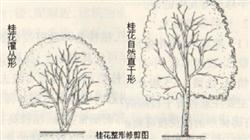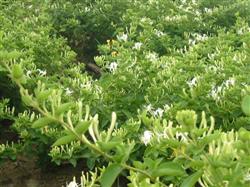What about the deformity of Pleurotus ostreatus?

How to plant bailing mushrooms and find abnormal mushrooms? Is there any way to prevent the production of Pleurotus ostreatus, reduce the product grade, and even lose the commodity value, affecting the economic benefits of the growers? The common malformed mushrooms are: mushroom lid clasping "fist shape", stalk long fat thick lid small "vase shape", lid sunken and cracked outer roll "broken bowl", lid narrow and long "ox tongue", lid surface spot "hemp face", tumour protruding in lid "bulging belly", two lids and spreading handle tightly connected with "butterfly shape", lid bending uneven "wavy edge", lid round wrapping bacteria fold contraction "bald shape", cover longitudinal split groove seam "flower mushroom shape" Several mushrooms are in the shape of a lotus flower. In addition, there are mushroom body atrophy, mushroom body yellow discoloration and so on. The reason for the emergence of deformed Pleurotus ostreatus is that the culture environmental conditions do not adapt to the special physiological requirements of Pleurotus ostreatus. The key lies in the poor coordination of temperature, humidity, light and gas during the mushroom emergence period, operational errors in management technology, and so on. The structure of the shed is unreasonable. The existing cultivation places of Pleurotus ostreatus are indoor mushroom house and field mushroom shed. It is often due to poor construction and unreasonable structure. Some mushroom houses have one-way doors and windows, and some vents are opened in the upper half of the wall, resulting in poor indoor air circulation; although there are vents on both sides of some plastic sheds, they are facing both ends of the fungus wall; and some have vents, but only for heat preservation. Never opened. Due to poor ventilation in the shed, resulting in serious hypoxia, resulting in the deformity of Pleurotus ostreatus. Bacteria wall stacking defective bacteria bags into the shed wall is too high, that is, 10 bags a yard, more than 1 meter; some bacteria walls are filled with clayey soil, which is impervious; some do not boil enough water after filling; some bacteria walls are palletized too dense, and there is no filling in the middle. In some cases, when building the wall, the bag head could not cut the film, and the part that entered the wall was only cut 1 beat 3, which cut too little, while the exposed end cut the film instead, and the mycelium was exposed without moisturizing, which inhibited the growth and development of these fruiting bodies. For example, in the north, there is a lack of moisture in the filling soil between the bags, and the water content in the bag is dry when heating up the buds in the cold winter, and the water content in the bag is absorbed by the filling, which makes the mycelium dehydrated, resulting in a deformed mushroom in which the cover is not spread or shrunk. On the other hand, the clayey soil has poor air permeability, which can not regulate the mycelium, but hinders the normal physiological and reproductive activities. There are four manifestations of congenital nutritional defects: first, cottonseed hull and wheat husk are damp and mildew and nutrients are degraded. The amount of nitrogen-containing wheat in the formula was too small, there was no adverse reaction in the early stage of mycelial growth, and the nutrition could not meet the needs in the growing mushroom stage. Second, the culture medium is rancidity. Third, the water in the bacterial bag evaporates and the hair mycelium is dehydrated. These belong to congenital malnutrition, so the mushroom cover is thin and wavy, or the mutant mushroom is not covered, the color is yellow and not white. The uncertainty of the expected delivery date is often due to the cultivation of mushroom heart-cutting, the mycelium is not yet physiologically mature on artificial bud, resulting in preterm birth deformity. After physiological maturation, the mycelium needed 0: 13 ℃ low temperature stimulation for 10-15 days, and during this period, more than 10 ℃ temperature difference stimulation for 5-7 days was needed to force the primordium to differentiate into mushroom buds. This is a distinctive feature of Pleurotus ostreatus. Growers often do not master this unique species, and the low temperature squatting period is insufficient, and the temperature difference stimulation is not enough, which leads to the inhibition of fruiting body development and deformation. When some mushroom farmers entered the shed to promote buds in early December, there was a serious lack of oxygen in the shed in order to keep warm and ignore ventilation. as a result, the mushroom stalk was as long as 20 centimeters, and the mushroom lid was clenched and full of "fist mushrooms." Some people were overjoyed to see that the mushroom buds were overjoyed, knowing that the mushroom buds were too dense to take them off. Some people worry that picking one bud will affect others; others are sparse but leave too many buds. Due to improper thinning of buds, mushrooms crowded with each other, so there are butterfly-shaped, long ox tongue-shaped, hunchback mushrooms and other variations. During the growing period, the poor management of the mushroom bud gradually differentiated into a fruiting body, which was often caused by poor regulation of temperature, light and gas during the growing mushroom period, resulting in oblique growth of the mushroom body, or hunchback or sunken cover, or spotted pockmarked face, color change, and harvest expired. The mushroom body is too large to meet the grade. Click to get more Pleurotus ostreatus planting technology click to get more edible mushroom planting technology
- Prev

How to propagate Osmanthus fragrans
If you do not pay attention to pruning and shaping for a long time, the cultivated sweet-scented osmanthus will grow into a deformed tree. For this kind of tree, it should be pruned pertinently. (1) plants that are very tall and lack of branches and leaves in the lower part of the trunk can be amputated from the upper part of the trunk, such as 2 / 3 or 3 / 4, to promote new branches in the lower trunk. It is found that there are many branches and positions in the coming year.
- Next

Propagation and High-yield cultivation techniques of Flos Lonicerae
Honeysuckle (lonicerajaponicathunb), alias honeysuckle, Erhua, honeysuckle or mandarin duck vine, is a semi-evergreen twining vine of Lonicera, with young branches densely covered with coarse hairs and glandular hairs, leaves opposite, ovate or ovate-lanceolate, 3-50n long, entire, coarsely hairy on both sides when young. Flowers in pairs in leaf axils, Corolla tubular,.
Related
- Fuxing push coffee new agricultural production and marketing class: lack of small-scale processing plants
- Jujube rice field leisure farm deep ploughing Yilan for five years to create a space for organic food and play
- Nongyu Farm-A trial of organic papaya for brave women with advanced technology
- Four points for attention in the prevention and control of diseases and insect pests of edible fungi
- How to add nutrient solution to Edible Fungi
- Is there any good way to control edible fungus mites?
- Open Inoculation Technology of Edible Fungi
- Is there any clever way to use fertilizer for edible fungus in winter?
- What agents are used to kill the pathogens of edible fungi in the mushroom shed?
- Rapid drying of Edible Fungi

